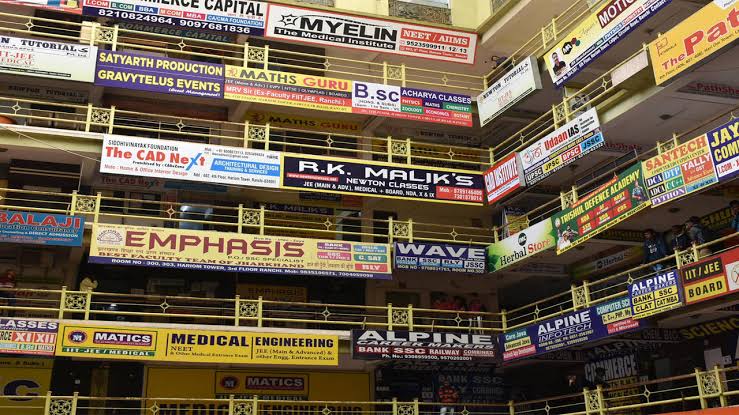Entrance Exams: A Burden on Students and a Barrier to Higher Education

India’s education system has long been viewed as a means of empowerment, where degrees were once seen as a respectable route to employment and growth. However, in recent years, the landscape has dramatically changed. Today, entrance exams have become the gatekeepers to higher education, reducing the chances of securing seats in top institutions. Once considered valuable in their own right, Bachelor’s and even Master’s degrees no longer guarantee jobs, as the country has increasingly prioritized tough entrance exams across sectors.
These exams, which were introduced to standardize and ensure merit-based selection, have now evolved into a business model for the government and private institutions. With rising exam fees, coaching costs, and an increase in competition, entrance exams have become both a financial burden and a source of significant mental strain for students. In this blog, we will explore how these exams have transformed into a filter, limiting access to education, and how the system now profits at the expense of students.
The Evolution of Entrance Exams: From Merit to Barrier
The evolution of entrance exams began as a way to create a fair playing field, ensuring that only the most capable students advanced to higher education. However, over time, the number of entrance exams has expanded, touching every field—engineering, medicine, law, management, and research. These exams, including the Joint Entrance Exam (JEE) for engineering, the National Eligibility cum Entrance Test (NEET) for medical courses, the Common Admission Test (CAT) for management, and the National Eligibility Test (NET) for academic positions, now determine whether students can move to the next phase of their educational journey.

The entrance exams have become so prevalent that they act as barriers rather than pathways. For example, JEE, one of the toughest exams globally, has over 15 lakh students competing for around 30,000 seats in prestigious institutions like the IITs. The exam not only filters out 90% of aspirants but also causes enormous stress and anxiety, as students put years into preparation, often at the cost of their mental and physical well-being.
Similarly, NEET has around 20 lakh aspirants vying for a few thousand medical seats in government colleges. Private colleges, where seats are more readily available, charge exorbitant tuition fees. The competition is so intense that students often enroll in coaching institutes, which have become a parallel education industry worth billions. In both JEE and NEET, students’ dreams of becoming engineers or doctors are shattered not by lack of capability, but by the highly selective and often commercialized nature of the exam system.
The Commercialization of Entrance Exams
Entrance exams have gradually transformed into a money-making machine for both the government and private institutions. While some exams may have started with noble intentions, they have now become lucrative revenue streams. Let’s look at some examples of fees associated with popular entrance exams:

- JEE (Main and Advanced): The JEE Main exam fee is ₹1,000 for general category male candidates, and ₹500 for female candidates. JEE Advanced, which is the second stage of the entrance process for the IITs, costs ₹2,800 for male candidates and ₹1,400 for female candidates. Every year, around 15 lakh students appear for JEE Main, generating significant revenue.
- NEET: The NEET application fee for general category students is ₹1,600. With over 20 lakh students appearing each year, this results in a massive collection of fees, adding further to the financial strain on aspiring medical students.
- CAT: For management aspirants, the CAT exam fee is ₹2,400 for general category candidates. Each year, around 2.3 lakh candidates appear for CAT, generating nearly ₹55 crore in application fees alone. This does not account for the additional revenue earned through conducting the exam and selling question papers to coaching centers.
- CLAT (Common Law Admission Test): CLAT, the gateway to prestigious law schools in India, charges an application fee of ₹4,000. Every year, around 70,000 students appear for this exam, translating into revenues of ₹28 crore from application fees alone.
These fees represent just the initial barrier to entry. Students often spend thousands more on coaching classes, study materials, and mock exams. The growing reliance on coaching further commercializes the process, turning education into a privilege for those who can afford the exorbitant costs. In cities like Kota, known for its coaching industry, students and families spend lakhs on preparation, yet only a fraction make it to the institutions of their choice.
Mental and Emotional Strain

The toll of entrance exams goes far beyond finances. The pressure to clear exams like JEE, NEET, CAT, and NET creates an environment where students are consumed by stress and anxiety. The sheer number of aspirants competing for a limited number of seats turns these exams into high-stakes situations. One slip during the exam could mean the loss of a year or more, pushing students into a cycle of repeated attempts, all while battling the emotional and psychological burden.
In fact, there have been numerous reports of student suicides, particularly in coaching hubs like Kota, due to the immense pressure placed on them to succeed in these exams. The competitive culture surrounding entrance exams has reached unhealthy levels, where students feel their worth is determined solely by their ability to clear an exam, rather than their knowledge or skills.
Is Education Still About Learning?

The current entrance exam model has overshadowed the true purpose of education—learning, personal growth, and intellectual development. Students are so focused on clearing exams that they often neglect the joy of learning. Rote memorization and exam-centric preparation take precedence over conceptual understanding and practical application.
The filtering nature of entrance exams also means that many talented and capable students are left behind. While exams are supposed to select the best, the reality is that they often filter out students who could have excelled with the right opportunities. Instead of being a tool to uplift and empower, entrance exams now act as barriers, perpetuating inequality, especially for those who cannot afford the resources to compete effectively.
A Call for Reform

Entrance exams in India have become a significant filter, reducing students’ chances of securing seats in higher education and contributing to the commercialization of the system. What began as a meritocratic approach has transformed into a business model that profits from students’ aspirations. With application fees running into thousands of rupees and an ever-increasing reliance on expensive coaching, the system favors those with financial resources, leaving others at a disadvantage.
Moreover, the emotional and mental burden placed on students has turned education into a source of stress, rather than a journey of learning. If India’s education system is to truly serve its purpose, there is a pressing need for reform. Entrance exams should focus on fostering merit and talent, without turning education into a business or a burden on students. Education must be a right, not a privilege for those who can afford to pay the price. Only through holistic reform can we ensure that the system works for all, rather than against them.
Write with us✍?
TeamUgtWorld warmly welcomes everyone! If you have something on your mind that you’d like to write about, we invite you to publish your thoughts on our platform @Ugtworld. To learn more, please click on the link provided below.


